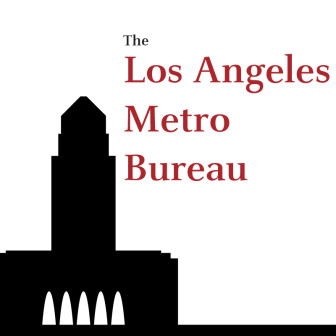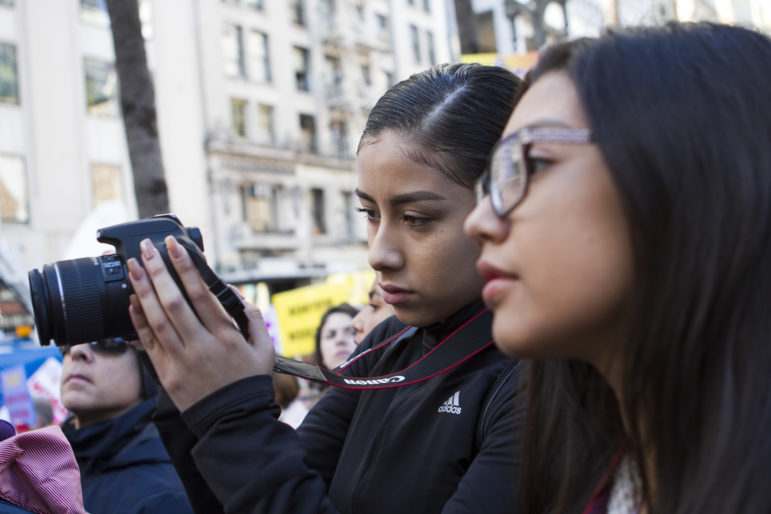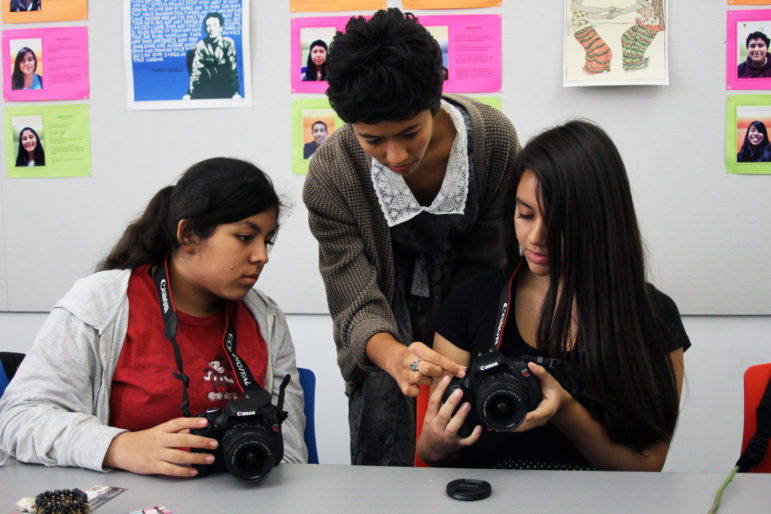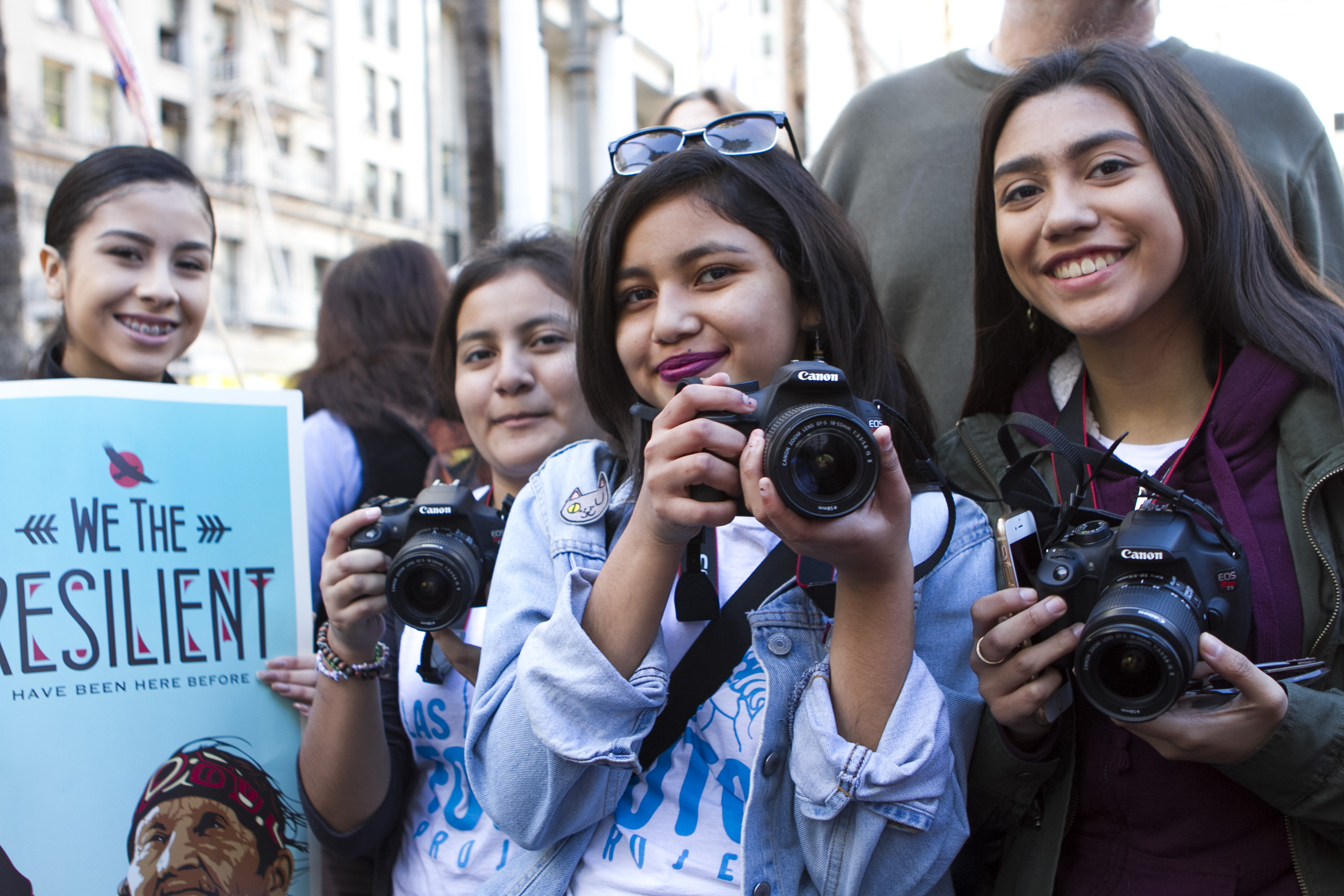LOS ANGELES — When Stephanie Medina picked up a “professional” camera for the first time two years ago, she never expected her photos could have such an impact on her and her community.
She zoomed in on a world of lighting, angles and framing as a participant with Las Fotos Project, a nonprofit photography organization for teen girls in underserved communities. But it was the program’s focus on health, wellness and advocacy that hooked the 16-year-old from Los Angeles’ Eastside neighborhood of Boyle Heights.
 “It’s not just about going and taking random pictures. You’re taking pictures to convey a message and present it to your community,” Medina said.
“It’s not just about going and taking random pictures. You’re taking pictures to convey a message and present it to your community,” Medina said.
Soon, Medina had built a portfolio of photos documenting how density in her neighborhood led to overcrowded and dirty streets, how street vendors were being criminalized by police, and how teens facing poverty and violence fell victims to drug abuse.
“These issues specifically target our community because we’re low income, because we don’t have access to different things that other people in different communities have,” Medina said.
While research shows low-income communities of color are more likely to face health disparities — differences in health closely linked with social, economic and environmental disadvantages — it’s not always easy to make residents aware of how to reduce them. Yet, teens in Las Fotos Project have learned to use photography as a tool for community advocacy and cultural documentation, providing a model for how residents themselves can help promote health in their own communities.

Las Fotos Project participant Julianna Aguirre, left, prepares her camera at the Women’s March in downtown Los Angeles on Jan. 21, 2017.
For Las Fotos Project Founder and Executive Director Eric Ibarra, providing a level of advocacy and leadership for girls living in communities facing these challenges was key.
“If you’re aware that something is happening around you, you at least have the option to choose to act different or make different choices,” Ibarra said. “But if you are totally oblivious to what’s going on around you, you fall victim to that same cycle.”
After launching a pilot project in downtown Los Angeles in 2010, Las Fotos Project began to partner with centers and schools in communities across the city, including Highland Park, Koreatown, South Los Angeles and East Los Angeles, Long Beach, MacArthur Park and other low to middle-income communities of color.
Today, the program has its headquarters in Lincoln Heights, a low-income neighborhood northeast of downtown LA, and also expanded its reach with satellite locations in Mexico and Venezuela. Through mostly volunteer mentors, girls ages 11 through 18 are offered a series of programs where they get trained on the fundamentals of photojournalism but also learn about mindfulness, identity, and the impacts of health and social conditions within their environment.
Research shows health disparities impose a steep cost on the U.S. economy. According to the National Partnership for Action to End Health Disparities, racial and ethnic minorities, identified as some of the most vulnerable groups in American, are more likely to suffer from disease and may die up to 20 years earlier than others. In an effort to combat those effects, the U.S Department of Health and Human Services launched its Action Plan to Reduce Racial and Ethnic Disparities in 2011 as a way to continuously assess the impact of all policies and programs on racial and ethnic health disparities across the country.

Volunteer mentors give girls tips on proper photo techniques.
Several states have also implemented their own strategies. In California, health advocates are about midway through a 10-year plan that focuses on improving conditions under which young people in underserved communities can be healthy and thrive.
Beatriz Solis, southern region director of the California Endowment’s Healthy Communities initiative says helping residents understand the factors that contribute to health disparities is vital.
“Your zip code determines your health more than your genetics,” Solis said. “Where you live, where you go to school, the amenities in your community, all those things matter to community health.”
Solis says the goal is to apply local strategies designed by residents and provide them with the resources needed to take action and spur changes in policy.


